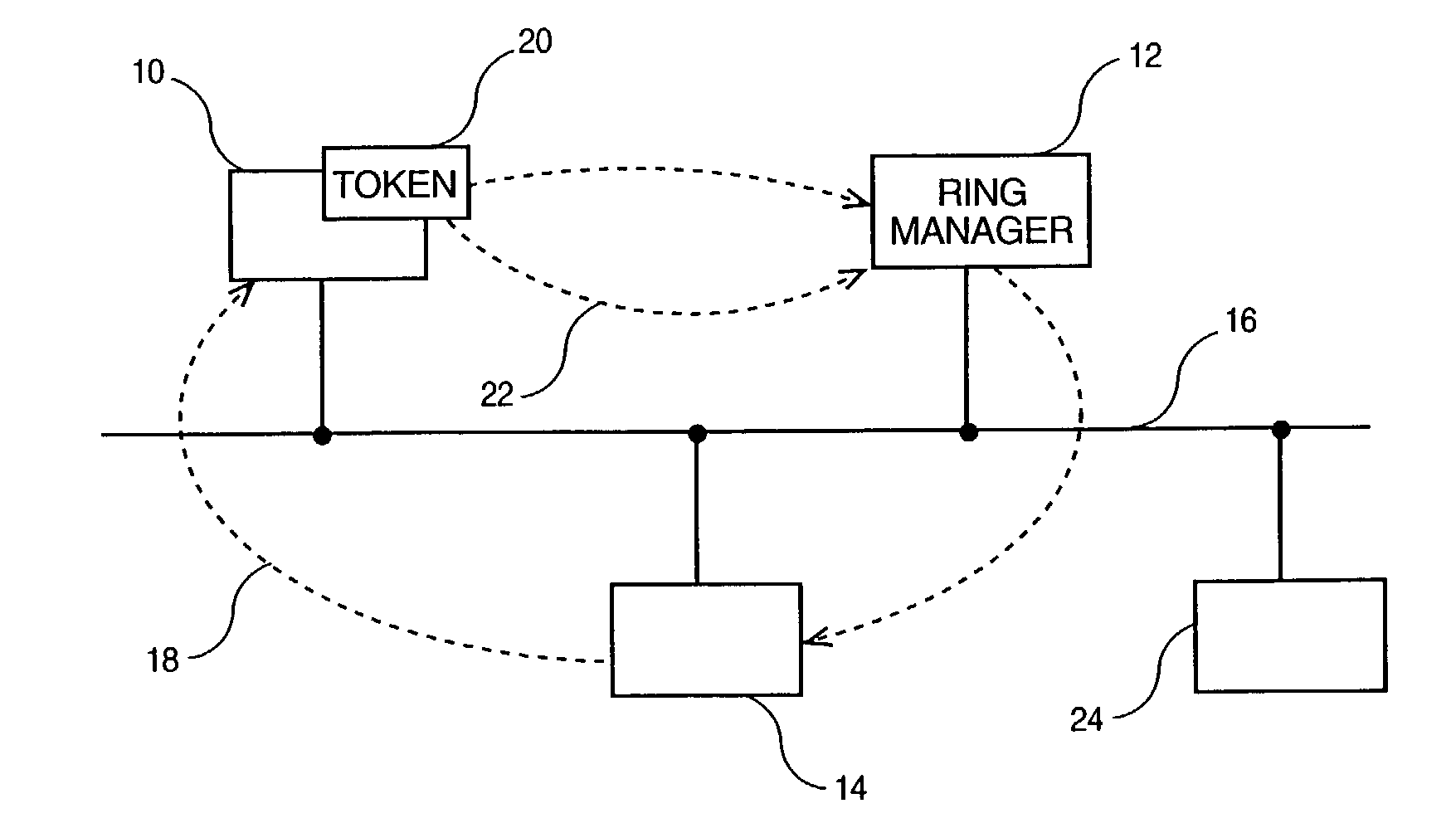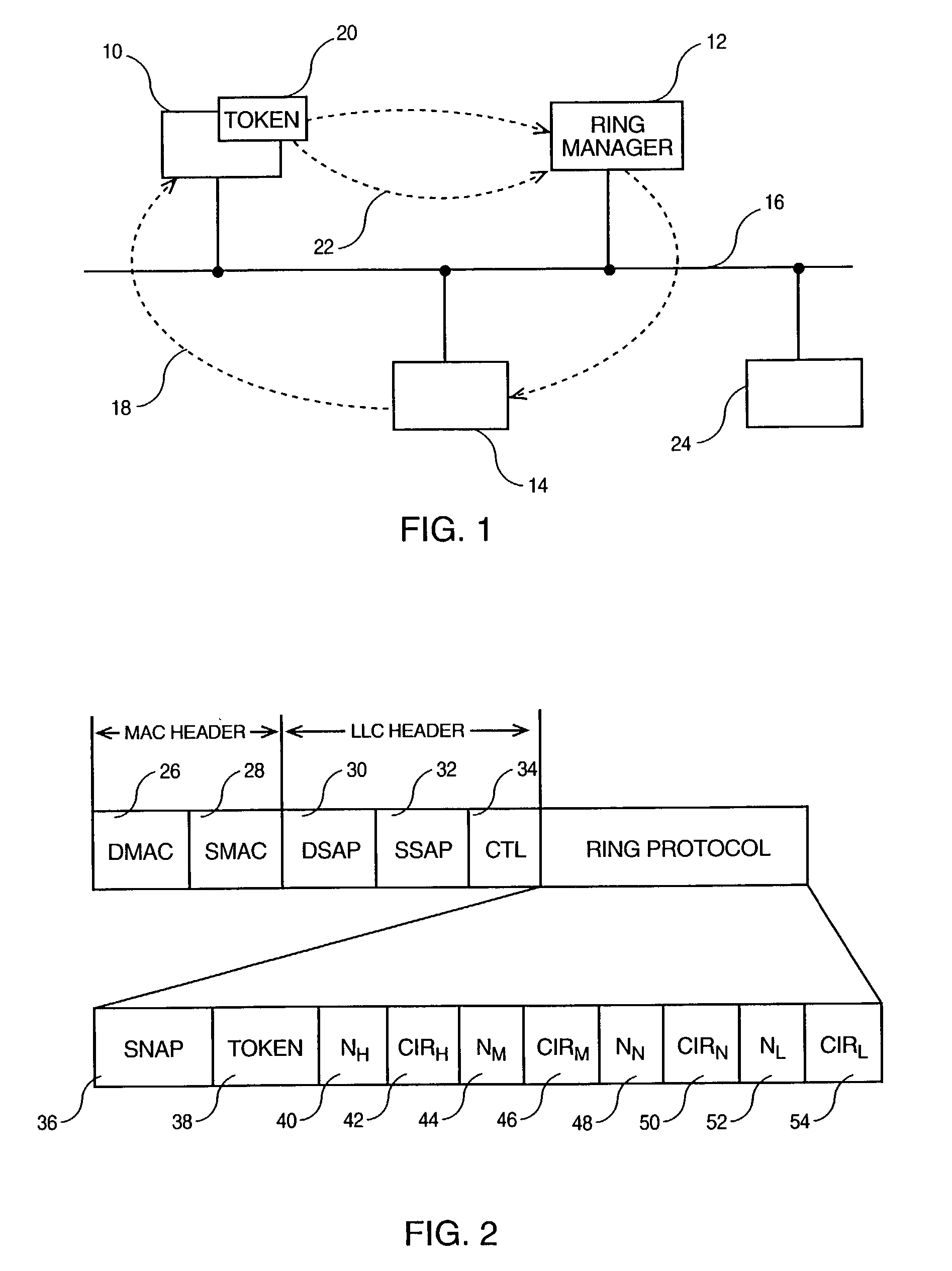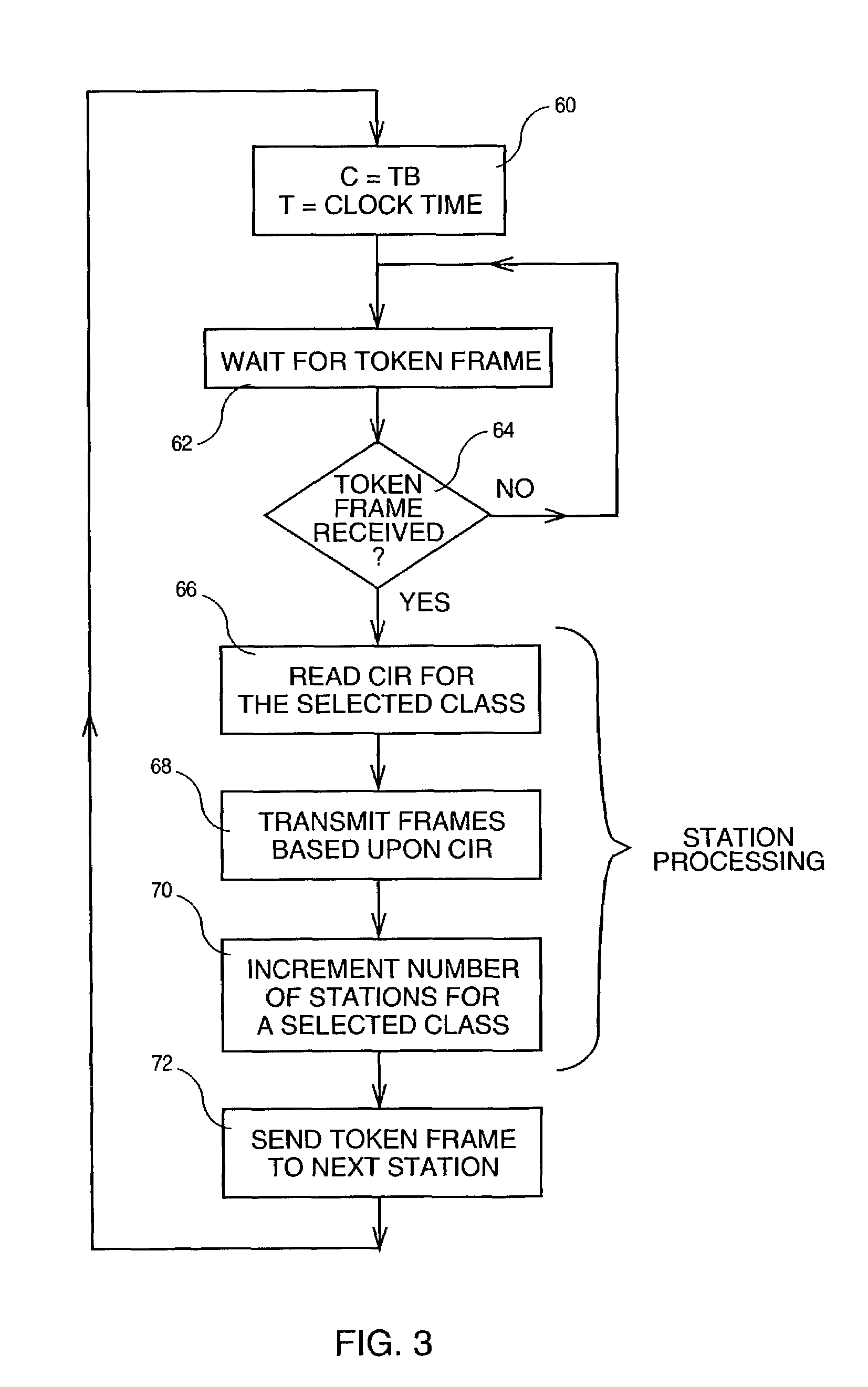Method of allocating bandwidth on request to the stations of a local area network
a local area network and bandwidth allocation technology, applied in the field of bandwidth management, can solve the problems of csma/cd protocol, drastic limitations in its ability to take advantage of the intrinsic performance of shared transmission, and inability to meet the requirements of bandwidth allocation
- Summary
- Abstract
- Description
- Claims
- Application Information
AI Technical Summary
Benefits of technology
Problems solved by technology
Method used
Image
Examples
Embodiment Construction
[0015]According to FIG. 1, an Ethernet LAN includes several stations 10, 12 and 14 physically connected on the shared medium 16, exactly as with a regular collision Ethernet LAN, and organized so that they form a logical ring 18. This is achieved through the circulation of a token 20 which takes the form of a special Ethernet frame, forwarded 22 from one station to a next one, e.g., from station 10 to station 12.
[0016]It is worth noting here that not all stations connected on the same LAN segment need to participate into the collision-free ring 18 thus formed. The invention assumes that both types of protocols (collision and collision-free) may coexist at any given instant so that a station like 24 needs not to implement the new protocol while still being able to communicate with all the others connected on the shared transmission medium 16 however, using the regular collision protocol.
[0017]It must also be noted that one of the stations whithin the ring, for example the station 12,...
PUM
 Login to View More
Login to View More Abstract
Description
Claims
Application Information
 Login to View More
Login to View More - R&D
- Intellectual Property
- Life Sciences
- Materials
- Tech Scout
- Unparalleled Data Quality
- Higher Quality Content
- 60% Fewer Hallucinations
Browse by: Latest US Patents, China's latest patents, Technical Efficacy Thesaurus, Application Domain, Technology Topic, Popular Technical Reports.
© 2025 PatSnap. All rights reserved.Legal|Privacy policy|Modern Slavery Act Transparency Statement|Sitemap|About US| Contact US: help@patsnap.com



